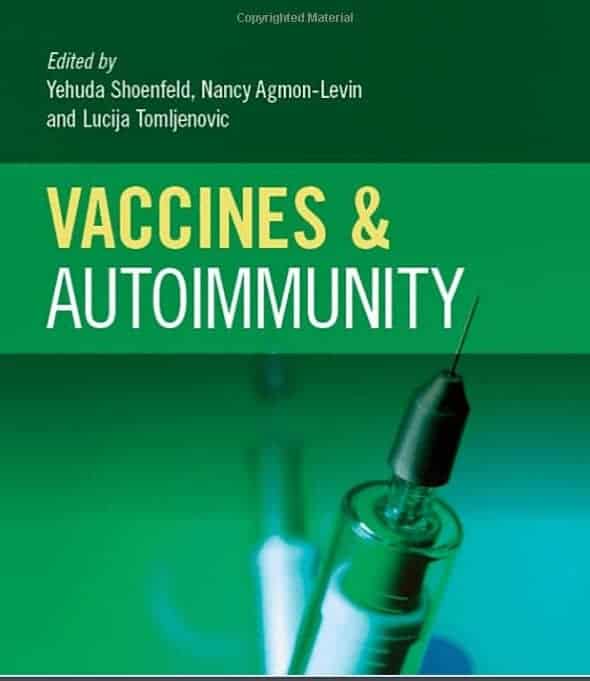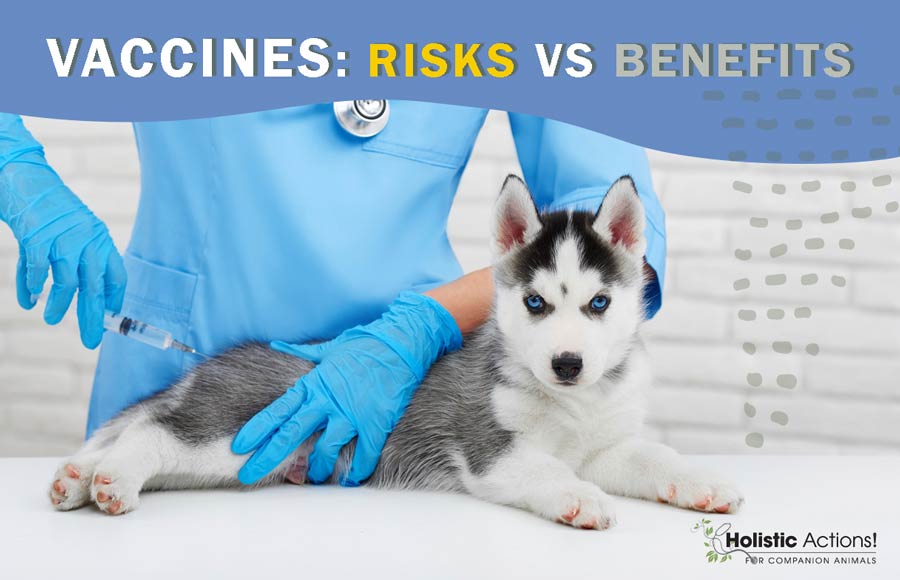This article has been adapted from the Holistic Actions! vaccinosis webinar ebook.
If you’d like to be notified the next time we have a webinar about vaccination or when the vaccinosis course is released, please sign up below.
There’s only one benefit from vaccinating. But it’s really big!
Vaccinating can save lives.
We vaccinate to prevent serious infections like parvo, distemper panleukopenia and rabies.
Exposure to these serious infectious diseases varies tremendously. Our kitties that never go outside have a much lower exposure risk than pups that go to agility classes weekly.
In people, the Centers for Disease Control estimates that in the past 20 years, vaccination has prevented 732,000 deaths among children.
The mortality statistics are not as clear for companion animals. However, we do know that vaccinating shelter animals and in the midst of some epidemics can also save lives.
Yet more and more caring pet parents prefer not to vaccinate.
Why is that?
Because there is growing evidence that we are making our companion animals sicker by (over) vaccinating.
Risks from Vaccinating
Adverse effects from vaccines range from immediate and fatal allergies to cancers and immune damage.
One example in people of this well-documented risk is called “ASIA” (Autoimmune Syndrome Induced by Adjuvants).
The veterinary literature has many similar immune dis-ease examples. Serious internal imbalances, like anaphylaxis, Autoimmune Hemolytic Anemia (AIHA), Immune-mediated Thrombocytopenia (ITP), thyroiditis, etc.
These reactions are often from toxic ingredients like mercury, aluminum, formaldehyde, genetically modified components, etc.
We inject these toxins because our pet’s “shots” don’t work without them. Yet at the same time we are trying to avoid exposure to toxins.
However it’s impossible to totally avoid the toxins in the vaccines we give our pets.
So do the many known risks from vaccinating outweigh the one potential benefit?
Good question but the answer depends on who you ask. One thing is clear:
Fewer vaccines = less risk.
Even University veterinary schools, AAHA (American Animal Hospital Association), AAFP (American Association of Feline Practitioners), WSAVA (World Small Animal Veterinary Association), etc. have been recommending minimizing vaccinating for years.
These are their “core” vaccination programs which are designed to decrease risk from giving un-needed vaccines.
Only rabies vaccination is mandated by law. The others are optional.
That makes it easier to reduce the risks of vaccinating. Many of these are described in the 866 page National Institute of Medicine’s “Adverse Effects From Vaccines” book.
There’s nothing controversial about any of this. These are well accepted facts.
Fear and the Benefit from the one Required Vaccine

ASIA, anaphylaxis, allergy and cancer may be some of the risks, but where’s the benefit?
In the case of rabies, the benefits are our pets remaining legal and possibly protecting them from a scary and fatal disease.
Other than rabies every 3 years*, there is no legal requirement to vaccinate.
Yet many of us vaccinate much more frequently. There’s one main reason that we do so.
Fear.
Fear of potentially serious and sometimes even fatal diseases.
Fear of the unknown.
What if…?
The good news is that fear of unknown risk can easily be reduced by considering the risk of exposure to these infectious organisms.
That’s pretty easy to determine. Look at your pets’ lifestyles.
Then ask your veterinarian and fellow pet parents whether they know of any recent local cases of parvo, panleukopenia, distemper, etc. And just call your town health department to see if there have been any cases of rabies in your area.
If cases of parvo, flu, rabies, etc. are rampant in your area, you may choose to vaccinate.
How to Reduce Risk from Vaccinating
If you do so, there are safe and effective ways to reduce the risks from the toxins in vaccines.
The most effective way is to look closely at whether your pets are healthy enough to get vaccinated. Click here for an article that gives you another way to reduce the risk. Especially if you need (by law) to vaccinate an unhealthy (internally imbalanced) pet.
However, determining this level of health is not as easy as finding exposure risk.
Fortunately, you can learn this and significantly decrease this risk by closely observing your pet’s symptoms.
Symptoms like the Holistic Actions! BEAM (Behavior, Energy, Appetite, Mood) symptoms and the early warning signs are great clues of any internal imbalance.
If any of these clues are found, then vaccination carries an extra risk. Correct internal imbalances before vaccinating in order to decrease it.
Externally observable and internally measurable symptoms reflect balance and health.

Unhealthy pets should not be vaccinated.
So “follow the symptoms” (they are better than money in this context!)
Vaccine manufacturers ask you not to vaccinate unhealthy pets for a reason. Unhealthy pets are internally imbalanced and much more likely to develop vaccinosis (state of energetic imbalance and mild to life-threatening illness occurring after an animal or person receives a vaccination).
Yet we vaccinate unhealthy pets every day.
Are Vaccinated Pets Healthier?
We assume that we need to vaccinate in order to keep our pets healthy. But is that true?
Part of the problem is our current conventional definition of health. “Health” is defined as the absence of named diseases like “Parvoviral Enteritis” or “Rabies Encephalitis”.
Not the true internal wellness and balance that improves quality of life and reduces risk of vaccinosis.
Yet many of our pets suffer from chronic dis-eases (internal imbalances) as a result of over vaccinating. Which we often do out of fear. Fear of both infection as well as fear of symptoms.
Vaccination and symptom suppression are quick and easy. Anti-biotics, steroids, etc. are very effective for eliminating symptoms. But they do not treat the underlying problem.
In fact there’s documented evidence that doing so can make immune function and internal problems worse! And increase risk of infections and vaccinosis.
There’s also lots of clinical evidence that eliminating symptoms by correcting any underlying imbalance reduces risk. “The proof is in the pudding.”
Many other of the articles and resources you’ll find here discuss the significance of symptoms and how to use them to re-balance your pet. So we won’t be going into that here.
Suffice it to say that symptoms reflect health and balance. You can use them to reduce the risks from vaccinating.
Recognizing and optimizing wellness also increases resistance to infection.
Please avoid automatically giving “Shots in the dark” before you research the risks and benefits of vaccinating.
Your pets will thank you.
